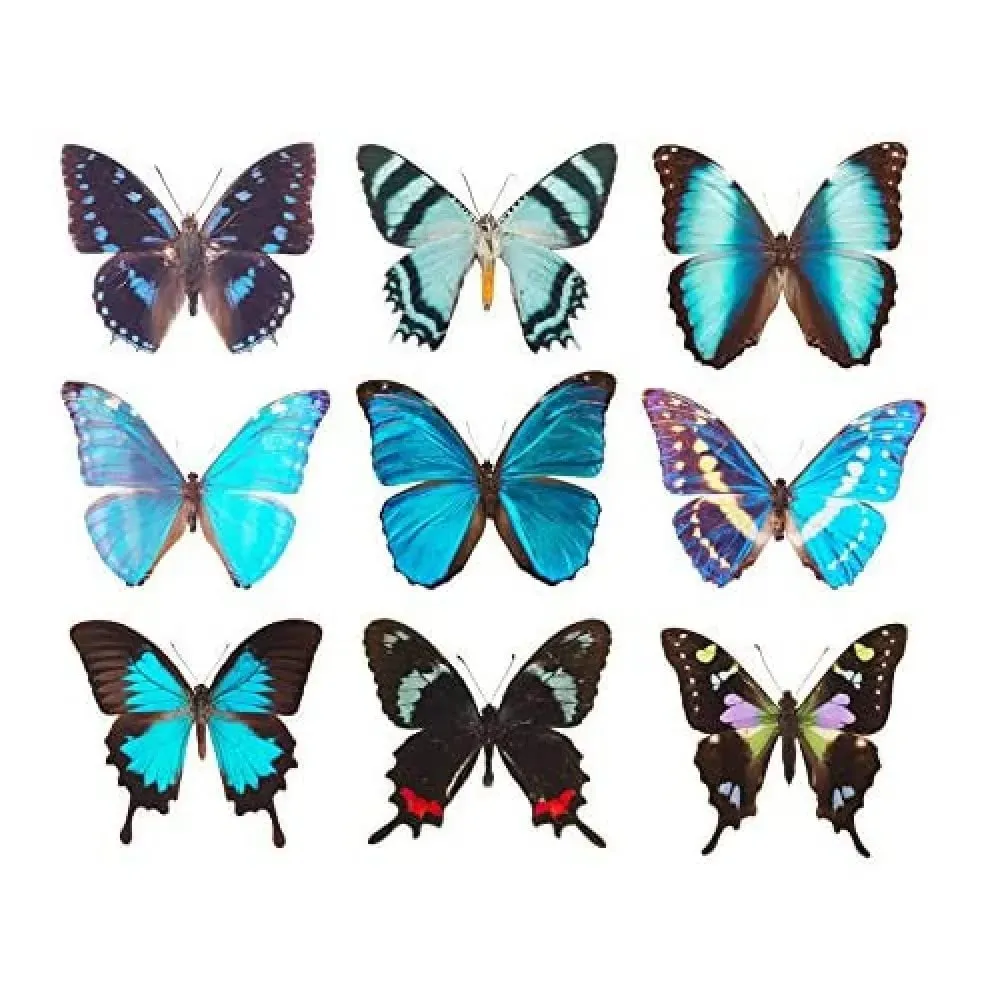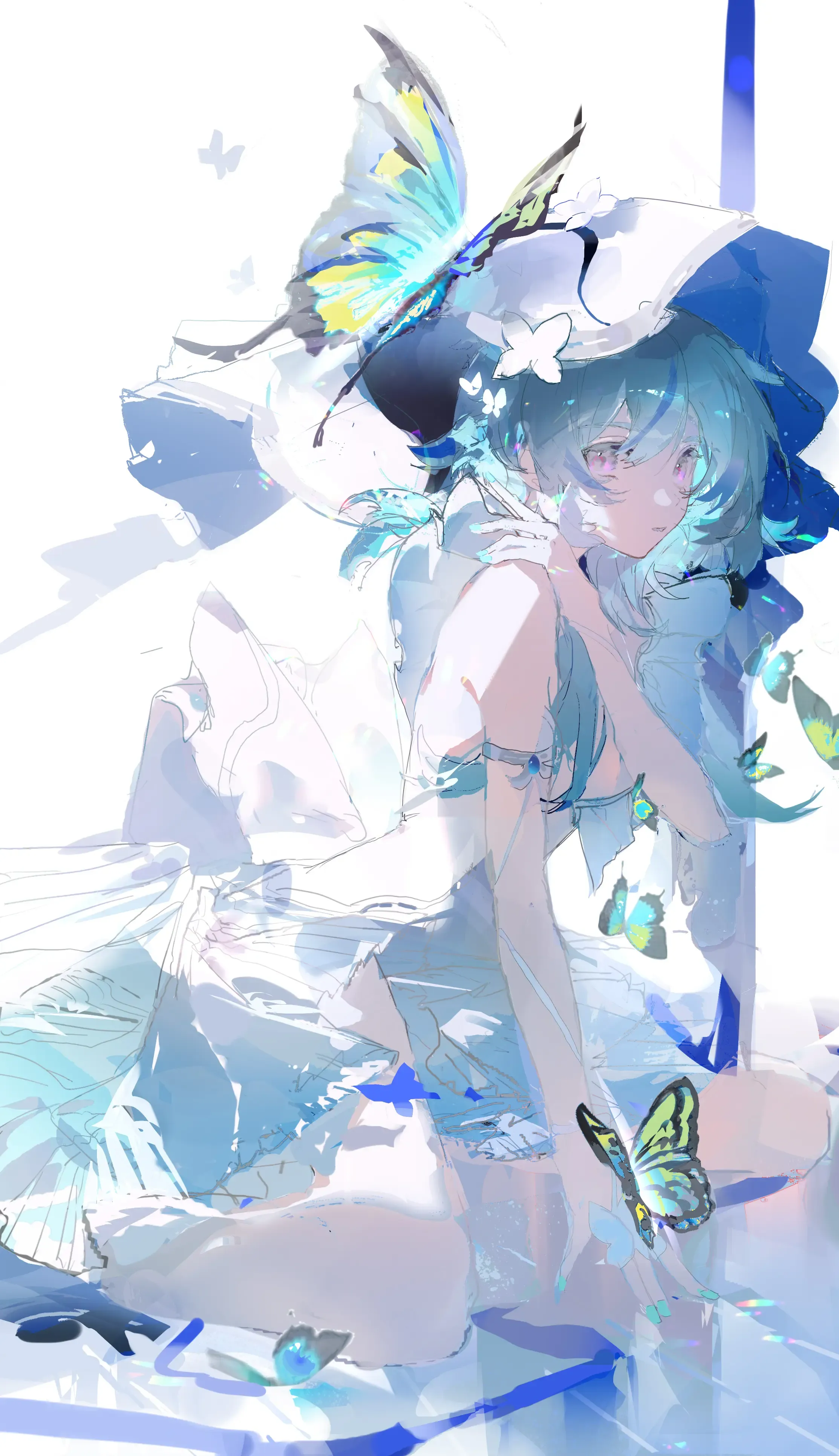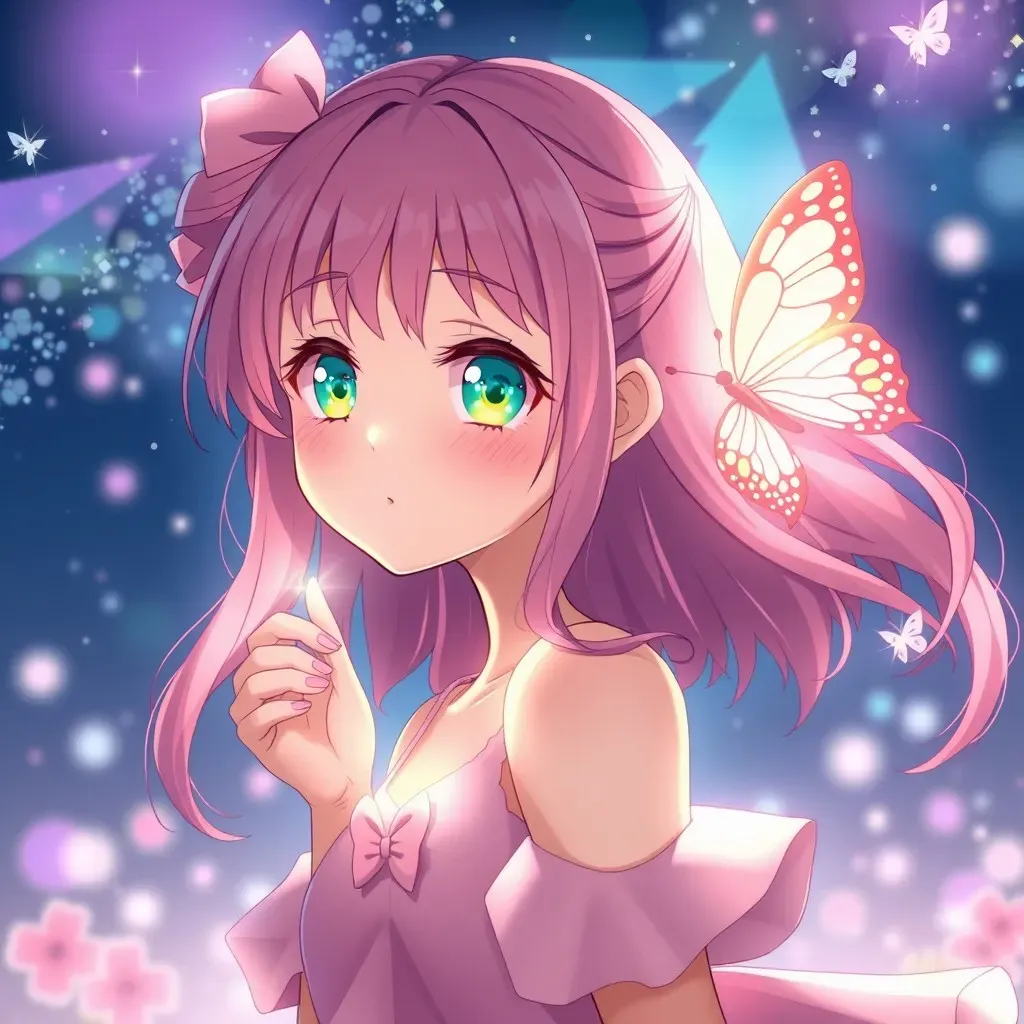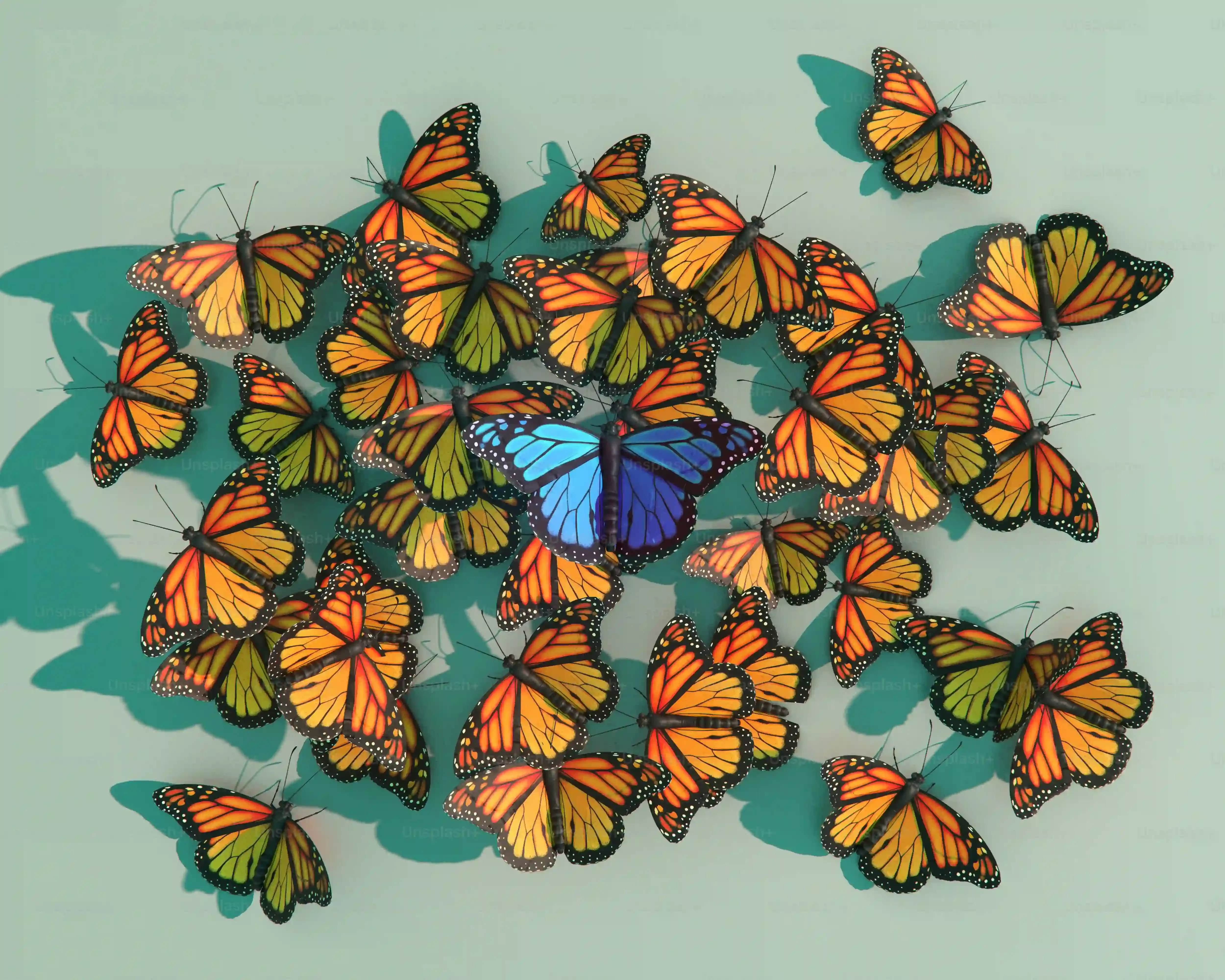Table of Contents
Think about butterflies. What comes to mind? Maybe bright colors fluttering through a garden on a sunny day. They seem simple, delicate creatures, right? Well, scratch the surface, and you'll find they're far more complex and astonishing than you might imagine. June often brings National Learn About Butterflies Day, a perfect time to look closer at these winged wonders. Forget everything you thought you knew about them sipping nectar; their lives are packed with incredible adaptations and epic journeys.
The Stunning Science Behind Butterfly Colors and Vision

The Stunning Science Behind Butterfly Colors and Vision
You think butterfly wings are just painted? Nope. It's way cooler. They actually have two ways to make color: pigment colors, which are like the dyes in our clothes, absorbing some light and reflecting others, and structural colors. Structural colors are wild; they come from the tiny, layered structures on their scales that scatter light, creating iridescence and those intense, metallic blues and greens you sometimes see. It's like a microscopic prism factory on their wings. Even more mind-bending, they see ultraviolet light, a spectrum completely invisible to our eyes. While we see a plain yellow wing, they might see intricate UV patterns that scream "single and ready to mingle" to potential mates. Imagine navigating the world with built-in disco lights only you and your friends can see.
Survival Strategies: Mimicry and Unusual Diets

Survival Strategies: Mimicry and Unusual Diets
Blending In or Looking Dangerous
Predators are everywhere, and looking tasty is a quick way to end up as lunch. Butterflies have figured this out. Some species are genuinely toxic or taste awful to birds or other critters. Think the Monarch butterfly, which eats milkweed as a caterpillar and becomes poisonous. But then you have the mimics. These are butterflies that look *exactly* like the toxic ones, but they're perfectly edible. It's a brilliant bluff. A bird learns to avoid the bad-tasting guy, and unwittingly leaves the mimic alone too. It's like wearing a venomous snake costume to keep people away – highly effective, if a bit dramatic.
The Quest for Salt
You picture butterflies delicately sipping nectar from flowers, right? Mostly true, but flowers are surprisingly low on one crucial nutrient: sodium. Just like you need salt, butterflies need it for nerve and muscle function, especially the males for reproduction. So, where do they find it? Not from blossoms. They're not above getting their fix from less glamorous sources. This is where things get weirdly fascinating. They'll sip from damp soil, mud puddles (often called "puddling"), animal dung, and even, yes, the tears of turtles or other reptiles. It's a mineral bar that would make most humans gag, but for a butterfly, it's essential.
Consider their preferred sodium sources:
- Damp soil and mud puddles
- Animal droppings
- Sweat on human skin (sometimes!)
- Tears from turtles or alligators
- Decaying organic matter
Pollination Powerhouses Beyond Bees
While bees get all the glory, butterflies are serious pollinators too. They might not carry as much pollen per visit as a fuzzy bee, but they visit a lot of flowers and can travel significant distances. Certain plants, like some varieties of cotton, have deep tubular flowers that are tricky for bees to access effectively. Butterflies, with their long proboscis, are perfectly equipped for the job. They flutter from bloom to bloom, inadvertently transferring pollen and helping these plants reproduce. They're the unsung heroes of pollination for a specific floral clientele, proving their ecological role goes beyond just looking pretty.
Epic Journeys and Brief Lives: The Butterfly Life Cycle

Epic Journeys and Brief Lives: The Butterfly Life Cycle
More Than Just a Few Weeks
When you see a butterfly flitting by, you're usually seeing the adult stage, the grand finale. Most people figure they live maybe a week or two, and for many species, that's spot on for the adult phase. They emerge, find a mate, lay eggs, and their job is done. But that's just one act in a much longer play. The *entire* life cycle, from a tiny egg laid on a leaf to the caterpillar munching away, then the seemingly dormant chrysalis (the pupa stage), and finally the winged adult, can take anywhere from about a month for some species to astonishingly, several years for others. It’s a complete transformation, a biological magic trick happening inside that chrysalis.
The Four Stages of Transformation
Every butterfly, including the many species that make up the group we might broadly call 9 butterflies, goes through complete metamorphosis. It’s not just growing bigger; it's four distinct forms, each looking and acting completely different. First, there's the egg, often tiny and stuck to a specific plant the future caterpillar will eat. Then comes the larva, the caterpillar stage, which is basically a dedicated eating machine focused solely on growing. It sheds its skin multiple times as it gets bigger. Next is the pupa or chrysalis, the quiet, often overlooked stage where the real internal remodeling happens. Inside that shell, the caterpillar’s body breaks down and rearranges into the adult butterfly. Finally, the imago, the adult butterfly, emerges to reproduce.
The Butterfly Life Cycle Stages:
- Egg: Laid on a host plant.
- Larva (Caterpillar): Eats and grows rapidly.
- Pupa (Chrysalis): Transformation occurs inside a protective casing.
- Adult (Imago): Emerges, mates, and lays eggs.
Monarchs: The Ultimate Road Trip
While many butterflies live out their short adult lives near where they hatched, some embark on journeys that make human road trips look like a quick run to the store. The Monarch butterfly is the undisputed champion of long-distance travel in the insect world. Millions of them east of the Rocky Mountains fly up to 3,000 miles each fall from the US and Canada down to specific fir forests in central Mexico to overwinter. It’s not the same butterfly making the whole trip back in the spring; it takes multiple generations to complete the round trip. How they navigate such vast distances to return to the exact same overwintering sites year after year remains one of nature's great mysteries. It’s an inherited migratory instinct, a map encoded in their tiny brains, a truly epic feat for such delicate wings.
Protecting These 9 Butterflies: Why Their Decline Matters

Protecting These 9 Butterflies: Why Their Decline Matters
Seeing a butterfly used to be a common sight, almost a guarantee in summer. Now? Not so much. The stark reality is that butterfly populations, including many of the species represented by the general category of 9 butterflies people might encounter, are facing serious trouble. Habitat loss is a major culprit, often driven by things like factory farming which chews up vast tracts of land for monoculture crops, leaving no room for the wildflowers and host plants butterflies rely on. This doesn't just shrink their living space; it messes with the intricate networks they need to survive, disrupting everything from finding food to completing their life cycles and even navigating those incredible migrations. Look at the Monarchs; their numbers overwintering along the California coast have plummeted to alarmingly low levels, a stark indicator of broader environmental issues impacting these delicate creatures.
More Than Just Pretty Wings
We've covered a lot of ground, from seeing the world in UV light to snacking on salty tears and flying thousands of miles. These 9 butterflies, representing countless others, aren't just decorative garden visitors. They're complex organisms with survival strategies that would impress any engineer and life cycles that defy easy explanation. Their struggles, particularly the stark numbers facing monarchs, serve as a sharp reminder of the environmental pressures we've created. Appreciating these facts is a start, but recognizing their vital role in ecosystems and the very real threats they face is the next step. Maybe next time you see one, you'll look a little closer, understanding there's a lot more going on than just a flutter.